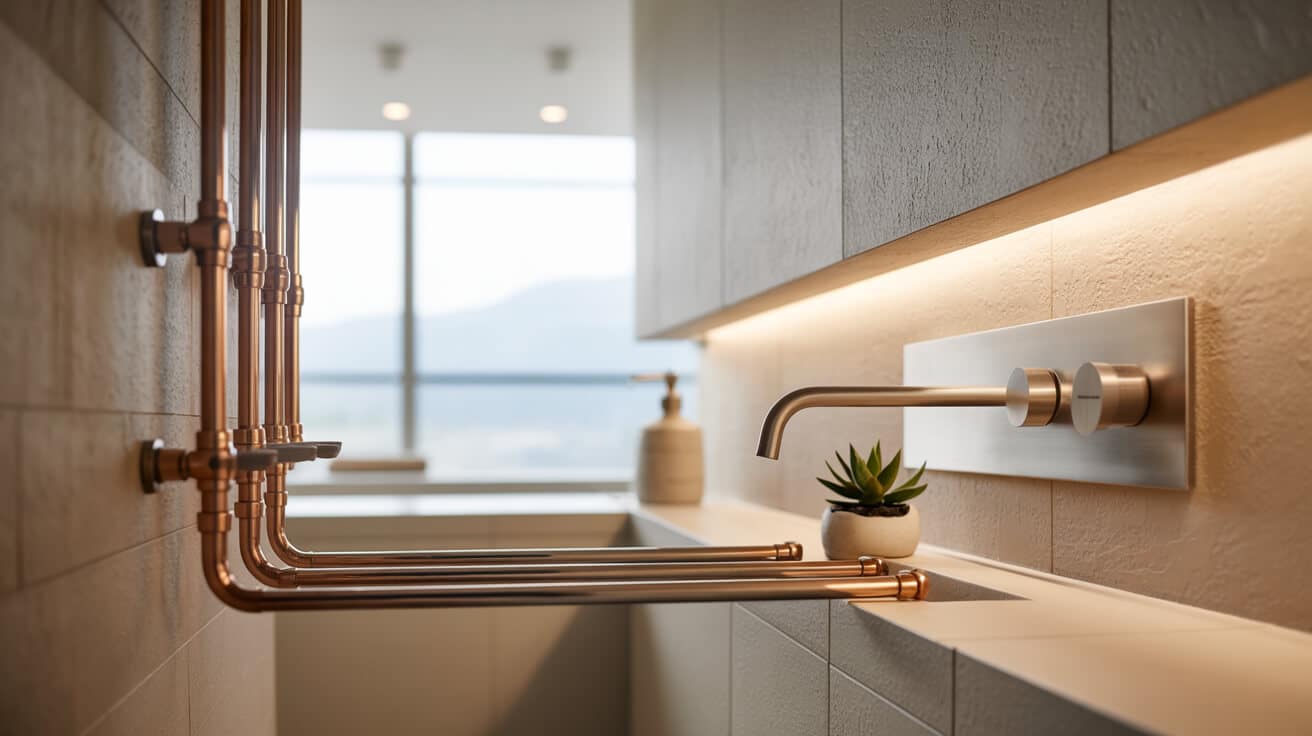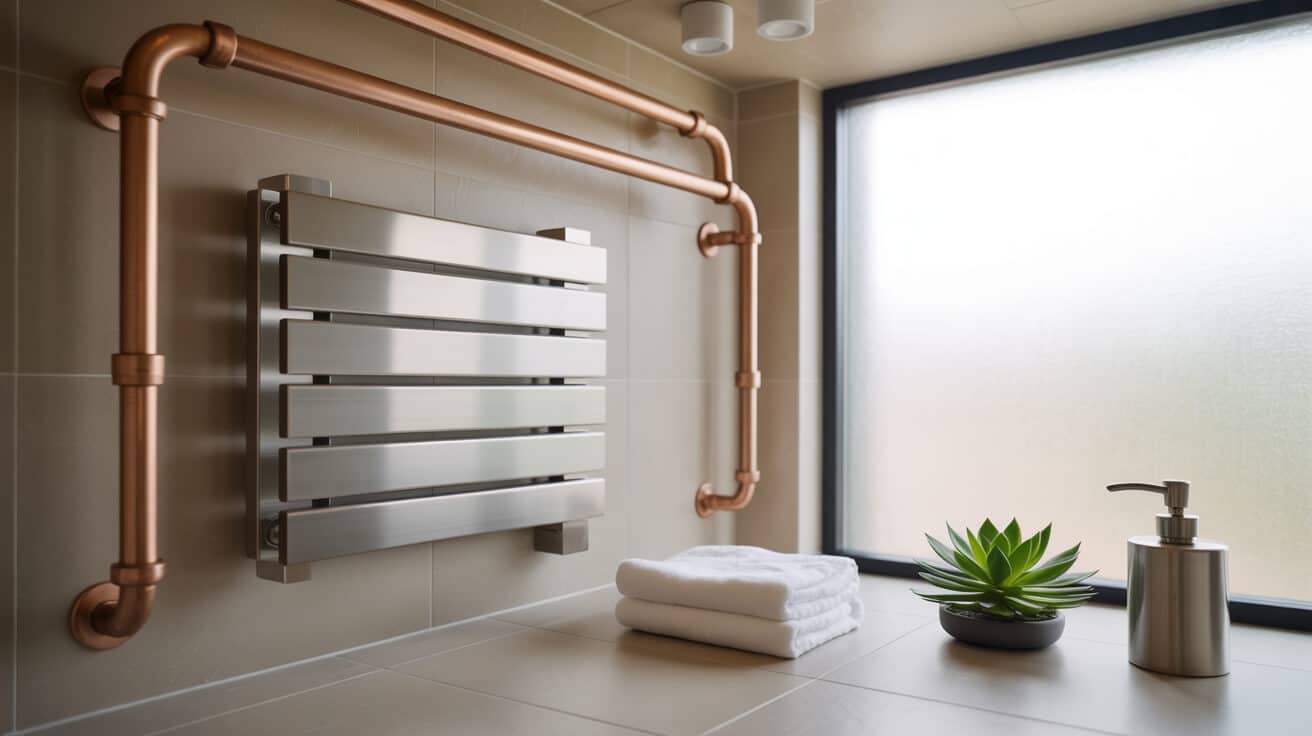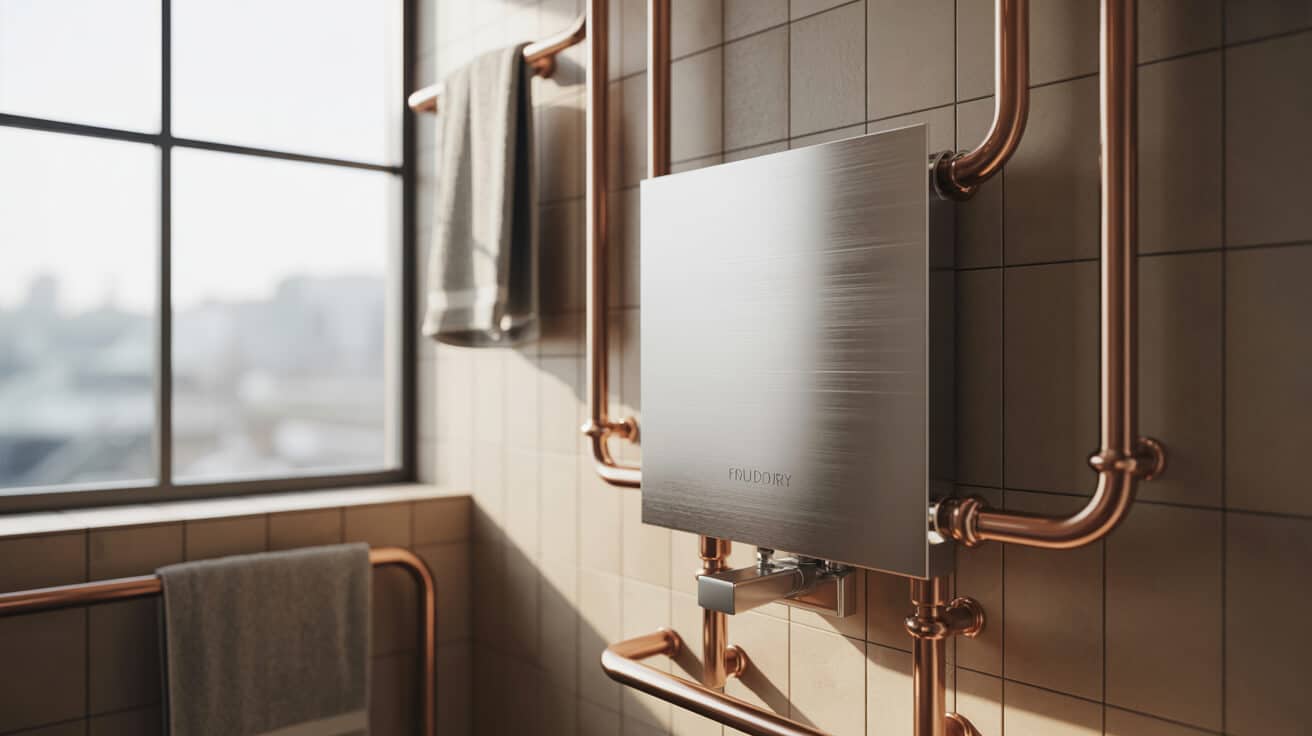Industrial plumbing differs fundamentally from residential or commercial solutions in both function and complexity. Systems within factories must support variable load conditions, repel chemical aggression, and integrate seamlessly with process equipment, all while upholding strict safety and legislative standards. The professional design, regular assessment, and responsive management of these installations play a central role in protecting your company’s assets, supporting workforce wellbeing, and ensuring long-term operational resilience.
Industrial plumbing focuses on the infrastructure necessary to deliver, treat, and manage water and waste in the world’s manufacturing hubs. This discipline involves more than mere installation—it represents an evolving, multidisciplinary regime involving engineering, health and safety, logistics, and regulatory expertise. Within this realm, the offerings of providers such as Plumbers 4U are defined by technical sophistication, reliability, and strict adherence to the standards your company relies on for operational success.
Plumbing in a factory is engineered for scale, with an emphasis on system redundancy, zonal control, and real-time monitoring, reflecting the demands of continuous production and zero-tolerance for unplanned outages. Every design and maintenance decision directly impacts your company’s output, compliance record, and risk exposure—reinforcing why this field is considered vital both for internal efficiency and external trust.
Etymology or Name Origin
Plumbing derives from the Latin “plumbum,” meaning lead, due to the widespread historical use of lead in water conveyance. As industry expanded, the term gained broader meaning, referring to any system of pipes or channels tasked with transporting water or fluids—regardless of material. In factory contexts, “plumbing” acquired greater specificity, bridging water engineering, environmental safety, and large-scale process control in ways distinct from its domestic and commercial origins.
Historically, the term embraced materials such as copper, steel, and specialised plastics, now standard in process and chemical distribution systems. Over time, the language of factory plumbing expanded with terms like “process water,” “trade effluent,” and “clean-in-place,” each denoting an adaptation of core principles to a respective sector’s unique risk, performance, or hygiene needs.
Overview / Context
Industrial plumbing in factories is characterised by complexity, modularity, and resilience. It stands apart from residential and commercial plumbing not just in size, but in scope—encompassing functions from basic sanitation to intricate process integration, fire suppression, and environmental control.
Distinguishing Features
- Scale and Capacity: Factory systems often span extensive footprints, requiring zone-based design, pressure management, and scalability. Maximum flow rates, pressure losses, and redundancy planning are fundamental from the start.
- Material Selection: Pipes and components must withstand both physical stress and chemical exposure from solvents, acids, or alkaline solutions. Stainless steel, HDPE, ABS, and other durable polymers are preferred for many process environments.
- Process Integration: Plumbing must interface directly with production lines, cooling systems, and climate control equipment, sometimes sharing infrastructure with HVAC, steam, and chemical dosing.
- Compliance and Documentation: Regulatory frameworks (PSSR, WRAS, Building Regulations, L8) mandate rigorous documentation, ongoing maintenance, and periodic testing.
Sector Applications
- Manufacturing: High-pressure networks serve hydraulic presses, mixing vats, cleaning lines, and batch reactors.
- Pharmaceuticals and Food Production: Systems emphasise hygiene; smooth-bore stainless, aseptic fittings, and rigorous contamination controls prevail.
- Automotive and Metalworking: High-temperature, corrosion-resistant lines for coolant, process water, or degreasing.
- Chemical Plants: Specialised anti-corrosion and secondary containment; strict zone isolation.
Health and Operational Significance
Reliable factory plumbing directly impacts:
- Worker health and welfare (clean water, sanitation, contaminant removal)
- Plant safety (fire suppression, emergency wash-down)
- Production reliability (minimising downtime and process contamination)
- regulatory compliance (avoiding fines, shutdowns, or reputational harm)
History
Origins and Early Development
Factory plumbing emerged with the industrial revolution. Initial systems adapted rudimentary domestic setups, scaling them to meet the demands of steam engines and wash-down areas. Lead, cast iron, and later copper became prevalent, each selected for its specific tolerance properties.
Industrial Emergence
The surge in mass production, chemical refining, and power generation in the late 19th and early 20th centuries necessitated bespoke systems. Pipe standards, pressure testing, and material science advanced in parallel with manufacturing technologies.
Contemporary Evolution
Legislation and technological innovation have defined the modern era. High-performance polymers, digital flow controls, automated shutoffs, and wireless monitoring systems supplement traditional techniques. Compliance frameworks like PSSR and L8 established formal obligations for documentation, inspection, and traceability—a landscape where continuous innovation is now a necessity, not a luxury.

Concept / Description
Plumbing systems in factories are designed as a series of networks and subsystems.
Core Principles
- Redundancy and Resilience: Systems must be fault-tolerant and easily isolated for maintenance, with backup supply and pressure controls.
- Segregation: Potable, process, and chemical water networks remain distinct to prevent cross-contamination.
- Traceability: All sections are tagged, with documentation for compliance, testing, and maintenance cycles.
Components
- Supply Mains & Branches: High-capacity feeders with zone valves, boosters, and pressure reducers.
- Process Water Circuits: Dedicated loops for cooling, cleaning, mixing, or transport.
- Drainage, Effluent, and Pre-Treatment: Drains downstream to interceptor tanks, neutralizers, or trade effluent outfalls.
- Safety: Emergency showers, eyewash stations, and fire-main connectors integrated into network.
- Controls: Flow metres, pressure gauges, and automated sensors enable remote control and alerting frameworks.
Structural Elements
- Direct-Buried and Exposed Pipework: Selected based on environmental and maintenance access.
- Manifold-Zoned Layouts: Enable isolation and parallel servicing.
- Anti-vibration and Expansion Allowances: Components accommodate temperature fluctuation, pulsation, and mechanical vibration for longevity.
Functionality / Purpose / Applications
Direct Functions
- Production Water: Delivers process-ready, temperature-controlled water for equipment operations.
- Cleaning and Hygiene: Supports cleaning-in-place (CIP), high-powered washdown, and sanitation protocols.
- Cooling: Routes for machinery, process, or air-handling unit cooling, including chiller loops.
Indirect Functions
- Emergency Services: Fire safety circuits, chemical spill washdown, and evacuation pathways.
- Employee Welfare: Toilets, welfare showers, breakroom sinks.
- Waste & Effluent Control: Safely conveys trade effluent, non-potable greywater, or hazardous waste for compliant disposal.
Deployment by Sector
Each sector structures functionality according to unique process, safety, and regulatory needs. Food sectors optimise for hygiene, metals for chemical compatibility, and pharmaceuticals for both purity and traceability.
Classifications / Types / Variants
System Approaches
- Bulk Supply: Centralised high-flow delivery, often with shared boosters and pressure zones.
- Modular/Zoned: Allows service to portions of the site without full shutdown, improving uptime during maintenance.
- Recirculating Systems: For tasks requiring precise temperature or contamination control, often including integrated treatment loops.
- Open Systems: Designed for single-use duties such as washdown or certain cooling.
Fluid Type Networks
- Potable Water: Sanitary delivery for employee use.
- Process Water: Customised for production, potentially treated or recycled.
- Effluent/Trade Waste: Handles contaminated or hazardous outputs with multiple barrier layers, e.g., separators, pH adjustment.
Specialty Applications
- Steam Distribution: For heating, sterilisation, process chemistry.
- Chemical and Solvent Lines: Requires high-compatibility materials, secondary containment, and regular integrity testing.
- Rainwater/Greywater: Integrated eco-systems for non-potable, secondary uses.
Systems / Tools / Methodologies
Planning and Audit
- Site Audit: Map existing supply, demand, and vulnerabilities. Identify regulatory exposure points.
- Hydraulic Modelling: Use of software and engineering calculations to forecast loads, plan pipe sizing, and mitigate risk.
- Zoning Strategy: Define isolation points for phased upgrades or repairs.
Equipment and Tools
- Pumps: Centrifugal, positive displacement, booster sets for pressure enhancement.
- Valves: Zone, check, backflow, pressure relief types for movement and protection.
- Sensors: For flow, pressure, water quality, and leakage.
- Filtration/Treatment Modules: Sand, carbon, UV, chemical dosing, as needed by sector.
- Monitoring: Digital panels and dashboards for real-time alerts, historical analysis, and compliance logs.
Maintenance and Inspection
- Leak Detection: Acoustic, thermal, or tracer dye methods.
- Inspection Cameras: CCTV or borescopes for inaccessible pipeline review.
- Testing and Logging: Scheduled pressure, flow, and water quality testing with rigorous data retention.
- Flush and Clean Protocols: Chemical and mechanical routines to maintain or restore system performance.

Stakeholders / Entities Involved
Operations
- Facilities Managers: Maintain continuous operation, coordinate with vendors, oversee budget execution.
- Production Engineers: Integrate plumbing with machinery, define process specifications, troubleshoot failures.
Safety & Compliance
- Health & Safety Officers: Conduct hazard assessments, authorise permits-to-work, lead regulatory compliance.
- External Auditors & Inspectors: Validate system safety, documentation, and compliance readiness.
Ownership & Investment
- Owners & Developers: Invest in long-term upgrades, maintenance contracts, and modernization projects.
- Commercial Landlords: Retain shared compliance and maintenance responsibility.
- Business Tenants: Manage day-to-day reporting, liaise for repairs, incentivize upgrade participation.
Service Providers
Plumbers 4U and other third-party specialists ensure proper installation, scheduled servicing, and compliance reporting to support your organisation’s production uptime, asset retention, and legal standing.
Legal / Regulatory / Ethical Considerations
Regulatory Landscape
- Statutory Requirements: Water Industry Act 1991, Pressure Systems Safety Regulations (PSSR 2000), and Building Regulations specify design, operation, and inspection obligations.
- Industry Standards: WRAS approvals, L8 (Legionella), SafeContractor, EN/ISO enable harmonised best practice.
- Asset Identification: Mandatory tagging and mapping to support traceability.
Documentation and Audit
- Scheduled inspections, logbooks, asset registers, and test certificates form the backbone of regulatory defence, ensuring swift demonstration of compliance.
- External audits focus on traceability, up-to-date documentation, and consistent performance logs.
Ethical Dimensions
- Employee and community health emerge as primary drivers for defect prevention and continual system improvement.
- Transparency in incident reporting and proactive pollution prevention are ethical imperatives that often supersede mere compliance.
Performance Metrics / Data / Measurements
Operational Metrics
- Uptime: Track mean time between failure, unscheduled downtime, and recovery time after disruptions.
- Water/Energy Efficiency: benchmarked against production, recorded in real-time dashboards for ongoing improvement.
- Incident and Leak Response: Monitor time to notification, containment, and full remediation.
- Water Quality/Safety: Continuous sampling and sensor output for temperature, bacterial content, and chemical composition.
Compliance & Maintenance
- Rigorous maintenance logs, inspection schedules, and asset life tracking are vital for audit preparedness.
- Adapting KPIs to sector and asset age allows organisations to optimise maintenance spend for risk mitigation.
Challenges / Barriers / Limitations
Technical
- Ageing/Legacy Systems: Limited digital oversight increases failure rates.
- Corrosion/Scaling: Chemistry mismatches cause ongoing maintenance issues.
- Integration Complexity: Blending old and new technologies or adapting to process change presents constant risk.
Economic & Social
- Budget Pressure: Deferred upgrades increase both long-term costs and risk exposure.
- Downtime Avoidance: Maintenance/upgrade scheduling must minimise disruption to production cadence.
Policy/Philosophical
- Regulatory Tension: Adapting to changing standards requires sustained investment.
- Sustainability Alignment: Corporate responsibility aligns ethical and legal duties towards resource and emissions goals, but may compete with short-term budget priorities.
Environmental and Resource Considerations
Water Use and Conservation
- Segregation and recirculation strategies reduce the draw on potable water supplies.
- Implementation of rainwater harvesting, greywater use, and closed-loop cooling for process needs minimises environmental impact.
Effluent Management
- Pre-disposal treatment including settlement, pH adjustment, and filtration is essential to comply with local laws and maintain community trust.
- Table: Typical Waste Streams & Treatment Methods
| Waste Type | Main Risks | Typical Treatment |
|---|---|---|
| Trade Effluent | Chemical contamination | Neutralisation, filtration |
| Process Waste | Suspended solids | Settlement, screening |
| Sanitary Waste | Pathogens, nutrients | Biological treatment |
| Stormwater | Silt, hydrocarbons | Oil/sand interceptors |
Sustainability and Emissions
- Adoption of high-efficiency pumps, variable frequency drives, and low-friction piping reduces energy demand.
- “Green plumbing” incorporates recycled materials and technology that reduce overall plant carbon footprint, often qualifying enterprises for grant programmes or lower insurance premiums.
Impact / Influence / Legacy
Factory plumbing systems—while largely invisible—shape the daily realities of production quality, worker protection, and risk resilience. The presence of robust, traceable, and regularly maintained plumbing is often the difference between swift production recovery and significant business loss, especially when unexpected failures occur.
Innovations in material science, monitoring, and compliance have gradually influenced not only industrial but also municipal, commercial, and residential approaches to water infrastructure. The lessons and operational standards refined in factories seed best practices throughout the built world.
Future directions, cultural relevance, and design discourse
Technological Forecasts
- Ever greater emphasis is being placed on predictive maintenance, modular system design, and digital traceability.
- Advanced polymers and eco-friendly materials are expected to vie with metals for future market share, aligning with both process flexibility and carbon policy shifts.
Design Innovation
- Movement toward modular and rapidly configurable systems addresses your company’s need for process adaptation, while digital platforms assure compliance without imposing on operation.
Cultural Significance
- Infrastructure, once a silent partner, is gaining recognition for its role in supporting not only productivity but also public perception, sustainability, and long-term business equity.
Emerging Debates
- The interplay between operational excellence, regulatory progression, and environmental stewardship will define the evolving value placed on plumbing within factory environments.

